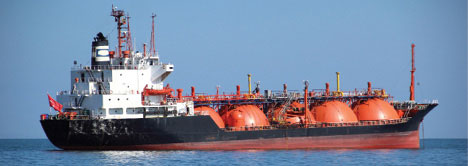PC News - May 2015
Australian gas markets - is there a case for policy reform?
A period of rapid change in the eastern Australian gas market has intensified debate over policy settings in Australian gas markets. A recent Commission Research Paper identifies substantial benefits from the ongoing integration of the eastern Australian gas market with the Asia-Pacific market and investigates major transitional issues. Modelling results in the paper indicate that reservation of gas for domestic purposes would require a large diversion of future gas supplies to have any noticeable price effect.

Download this article
The eastern Australian gas market is undergoing a period of rapid growth and transformation. The first shipment of liquefied natural gas (LNG) departed the Queensland port of Gladstone in January 2015, linking the last of Australia's three physically separated markets to international markets and exposing gas users on the east coast of Australia to market dynamics and prices in the Asia-Pacific region.
Expectations of higher gas prices and new sources of demand have created strong incentives for LNG producers to increase production, transmission and processing capacity. Estimates suggest that demand for gas in eastern Australia could increase more than threefold over the next 3-5 years, with around two-thirds of the volume of gas produced destined for export markets.
The fundamental structural changes in the market are creating or exacerbating a number of policy pressure points for gas producers, gas users and the broader community. In its research project 'Examining Barriers to More Efficient Gas Markets', the Commission has sought to provide an economic perspective on selected policy issues (figure 1).
The Commission found that the integration of the eastern Australian gas market into the Asia-Pacific market has already had, and will continue to have, significant implications for eastern Australian gas market participants. The process is creating strong structural pressures and imposes costs on gas users. Ultimately, however, the broader Australian community will benefit from the rise in the price (and volume) of the gas produced on the east coast of Australia. Policies that impede or counteract this process of structural adjustment could distort important signals for adjustment and are unlikely to be efficient or effective in the
long run.
For example, gas reservation policies are likely to require considerably more intervention than advocates imagine. Modelling by the Commission indicates that the level of intervention required to hold down long-term gas prices — at least 25 per cent of production from new gas fields to be reserved exclusively for domestic use — would carry significant costs. There is also no guarantee that a reservation policy will be effective, because reserving some of Australia's gas supplies for domestic users would deter investment in new sources of gas supply.
-
Figure 1 The scope of the Commission's eastern Australian gas market project
The need for sound policy settings across the supply chain
The rapid growth and transformation of the eastern Australian gas market puts a premium on policies that facilitate the reallocation of resources to their highest value use.
In upstream gas production, the mechanisms for allocating gas exploration and production rights should seek the optimal level and timing of such activities by companies that can perform them most efficiently. Policies designed to accelerate production, such as use it or lose it mechanisms, risk bringing forward gas production in a way that reduces the benefits received by the community from the gas resource.
Conflicting land uses are a challenge for governments
The gas industry faces strong resistance from sections of the community, partly due to the poor early record of some companies in dealing with landholders and local communities. There is scope for improvements to legislated compensation provisions to better reflect the costs to landholders from negotiating land access agreements and from the decline in the value of their properties. There is also scope for measures to reduce the costs of negotiating land access agreements, improve direct industry-community engagement as a way of reinstating community confidence and using a well-designed voluntary industry-wide code of practice for community and landholder engagement.
Community concerns about the environmental and public health risks of coal seam gas activities have led to moratoria on exploration and production activities in Victoria and New South Wales. Moratoria are not costless, and the expected benefits of the moratoria must be weighed against their expected costs — in particular, higher gas prices for users and reduced royalty and taxation revenue for governments. Scientific evidence suggests that technical challenges and risks from coal seam gas production can be managed through a well-designed regulatory regime, underpinned by effective monitoring and enforcement.
Transmission pipeline capacity
Gas transmission pipelines are another key part of the gas supply chain, and stakeholders have proposed changes to the way transmission capacity is allocated for some pipelines. This includes proposals to introduce open access principles and mandatory capacity trading provisions. The Commission highlighted tradeoffs associated with these proposals, including the risk of undermining incentives for future investment in pipeline capacity.
A note of caution on arguments of market power in upstream markets
Concerns about market power in upstream gas markets also feature prominently in the policy debate. A comprehensive assessment of the existence and exercise of market power in upstream gas markets was outside the scope of this project, but the Commission sounded some notes of caution in drawing firm conclusions on the extent of market power based on evidence that has been put forward to date.
Examining Barriers to More Efficient Gas Markets
- Read the Commission Research Paper released March 2015